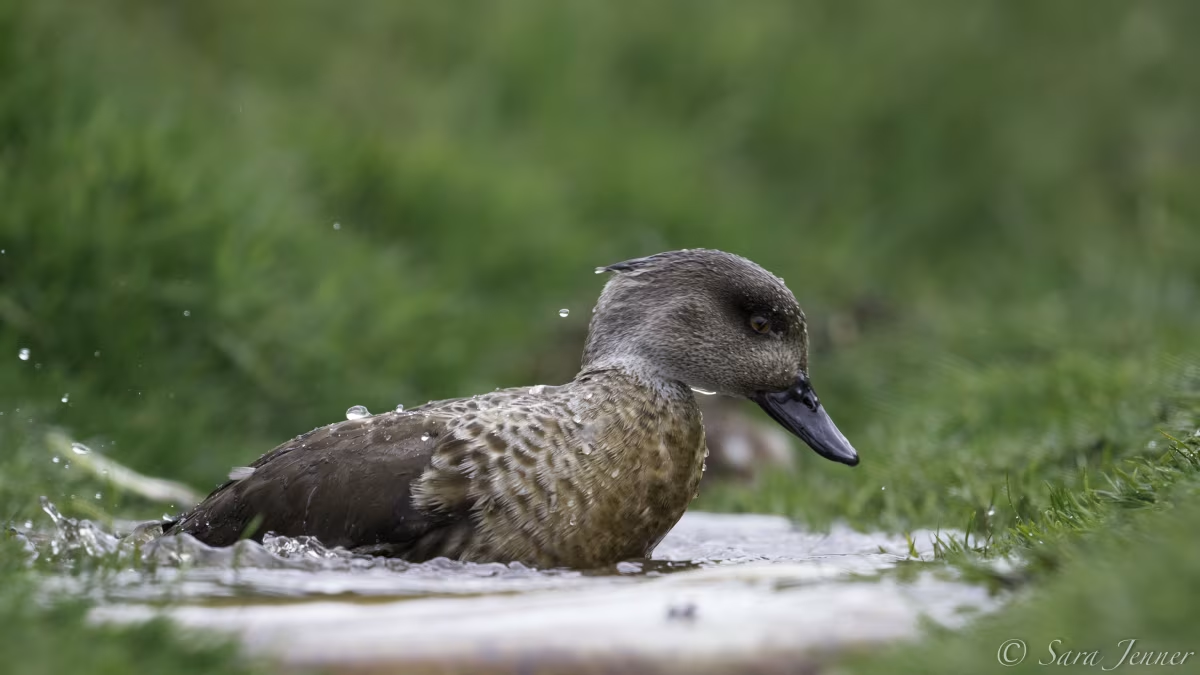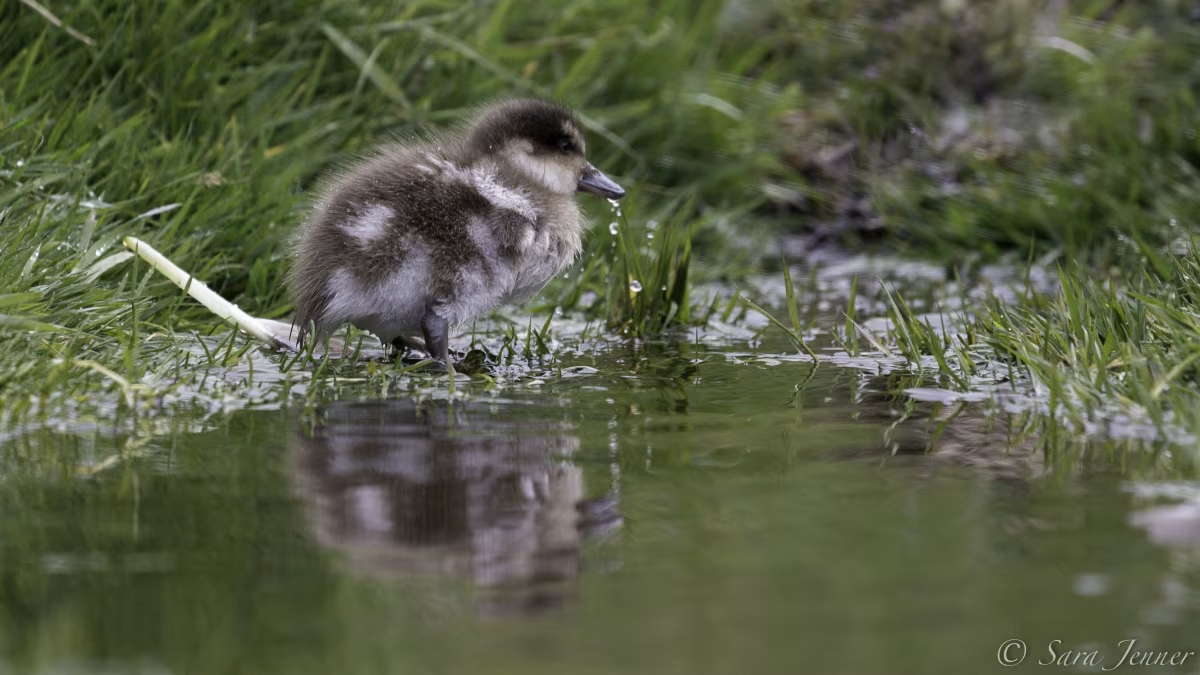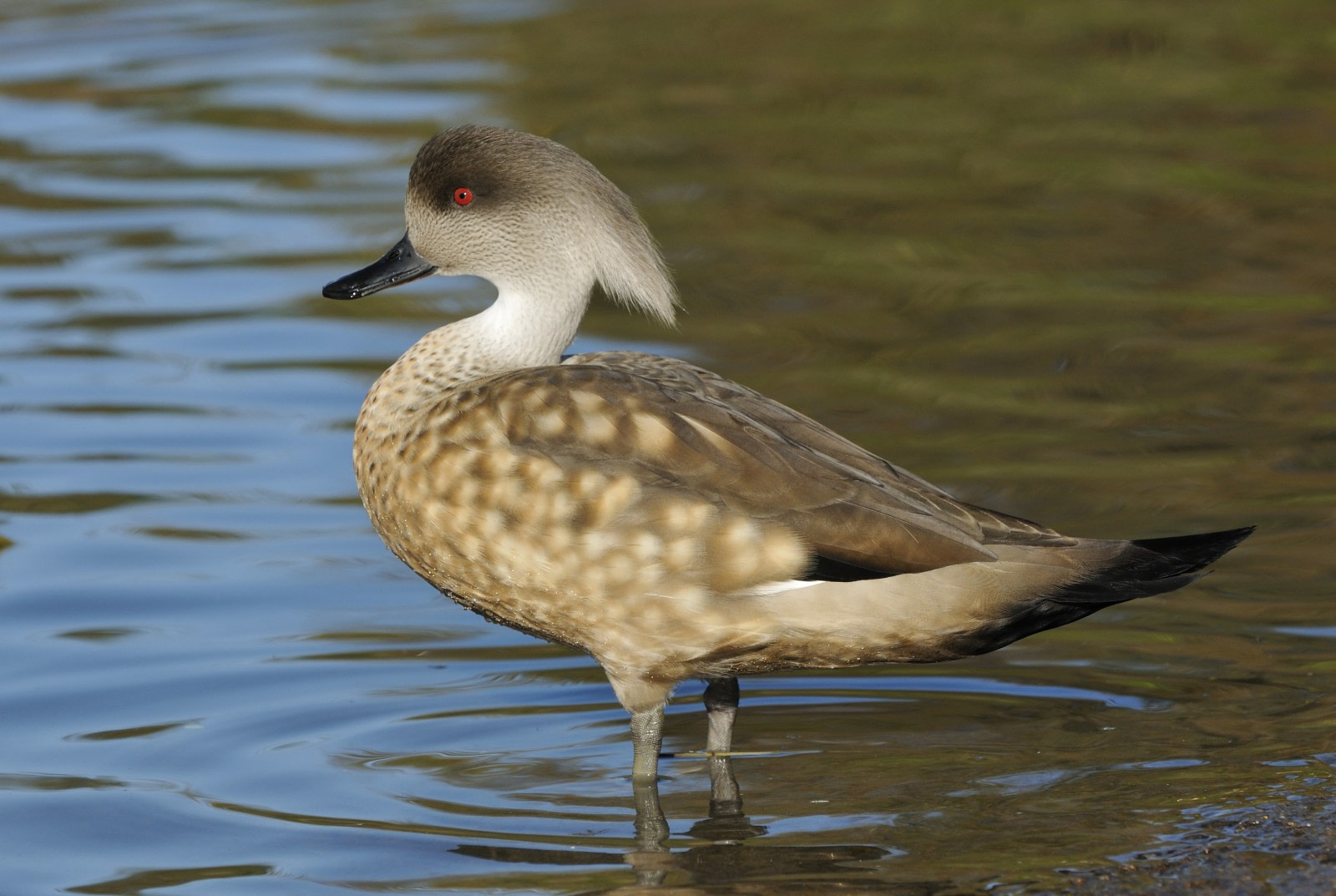Name: Crested Duck (Lophonetta specularioides)
Length: 50 to 60 cm
Weight: 1kg
Location: Chile, Argentina, Falkland Islands
Conservation status: Least Concern
Diet: Invertebrates, algae, crustaceans, seaweed
Appearance: Mottled grey and brown, lighter along the belly
How do Crested Ducks feed?
Crested Ducks are considered to be “dabbling ducks” – they swim and feed from the surface of the water, rarely making dives to get at food further down. However when food isn’t readily available at the surface Crested Ducks will make a shallow dive to hunt molluscs, crustaceans, insects, and insect larvae.
Are Crested Ducks social?
Like other ducks, Crested Ducks flock together in groups sometimes numbering in the hundreds.

How fast do Crested Ducks fly?
Crested Ducks can fly at a sprint of up to 95 km per hour for short distances. Cruise speeds average around 80km per hour.
What are Crested Duck birthing rituals like?
The breeding season for the Crested Duck is between October and December. Crested Ducks build their nests in shallow coastal regions or near ponds, hiding them in tall grass or foliage.
The nests are made from the surrounding vegetation and lined with feathers.
The female will lay between 5 and 8 eggs per clutch. The eggs weigh around 56 grams. The female takes on the incubation duties, the incubation period lasting about 1 month.
Once the eggs hatch both parents will tend to the ducklings. The chicks will begin to fledge (grow their adult flight feathers) when they are about 10 weeks old.
How long do Crested Ducks live?
Crested Ducks live an average of 20 years in the wild.

How many Crested Ducks are there today?
There is no certain number or even an estimate for the worldwide Crested Duck population. The Falkland Islands population is known to be around 20,000 individuals.
Do Crested Ducks have any natural predators?
Crested Ducks are on occasion attacked by the Black-crowned Night Heron. Ducklings are also vulnerable to other seabirds like the Skua.
7 Incredible Crested Duck Facts
- The “Crested” part of “Crested Ducks” refers to a tuft of feathers that extend off of the back of the duck’s head, looking somewhat like hair.
- Crested Ducks are non-migratory.
- Crested Ducks are very aggressive, battling with potential invaders.
- An adult pair of Crested Ducks may raise more than one brood in a year.
- Crested Ducks have bright orange or red eyes that are the brightest in drakes (males) that are ready to breed.
- The Andean Crested Duck is slightly larger than the Patagonian version.
- The crest of Crested Ducks is often not evident on any one individual.



